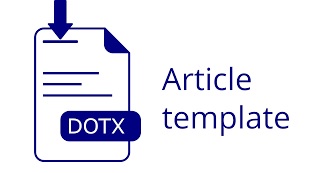Strategi Jepang Dalam Mereformasi Administrasi : Literature Review
DOI:
https://doi.org/10.30656/sawala.v8i2.2564Keywords:
Reformasi Administrasi, Strategi Reformasi Administrasi, dan JepangAbstract
Focus of this research is to describe administrative reform process in one country, by finding the strategies of administrative reform in transforming and developing administration system in Japan. Descriptive qualitative analysis by study literature and examining secondary data as a data collection method use in this research. The result show that there are three strategies successful of administrative reform: (1) reorganizations; (2) deregulations; and (3) decentralization. The conclusion of this research that are government must used its power to achieve the stated reform goals. The Japanese government has the courage non-populist policies by dissolving state ministries, recruiting civil servants, undertaking privatization, and gradually a bureaucratic culture that tends not to be innovative. Every change in Japan is preceded by an institutional order that is responsible for a particular problem and is ad-hoc (temporary). This shows that how Japan is controlled for certain problems by having targets that must be resolved. Realizing that political support is inevitable and even a necessity in implementing administrative reform in Japan.
References
Al-Fadhat, Faris. (2019). Ekonomi Politik Jepang di Asia Tenggara Dominasi dan Kontestasi Aktor-Aktor Domestik. Yogyakarta: Pustaka Pelajar.
Ando, Hiroshi dan Angel, Robert C. (1994. “Japan’s New “Reform†Government: An Interim Assessment†dalam Asian Affairs: An American Review. Vol. 21, No. 1. Hlm: 14-38.
Bae, Yooil. (2007). State Restructuring and Pathways to Local Democracy: Idea andf Politics of Decentralization in Japan and Korea. Disertasi. University of Southern California: Los Angles.
Caiden, Gerald E. (1991). â€Administrative Reformâ€, dalam Ali Farazmand, ed, Handbook of Comparative and Development Public Administration. New York: Marcel Dekker, Inc
Campbell, John Creighton. (1999). “Administrative Reform as Policy Change and Policy Non-Changeâ€, dalam Social Science Japan Journal. Vol. 2, No. 2. Oktober. Hlm: 157-176.
Cerase, Francesco Paolo. (2002). “Japanese bureaucracy in transition: regulating deregulationâ€. dalam International Review of Administrative Science. Vol. 68, No. 4. Hlm: 629-647.
Christensen, Mark, J. (2000). “Japan’s administrative counselling: Maintaning Public Sector Relevance?â€, dalam The International Journal Of Public Sector Management. Vol. 13, No. 7. Hlm: 610-623.
Connors, Lesley. (2000). “Next steps for Japan: Administrative Reform and The Changing Polityâ€, dalam Asia Pacific Review
Drifte, Reinhard. (1998). Japan’s Foreign Policy For The 21st Century: From Economic Superpower to What Power?. Oxford: St. Antony’s College.
Effendi. Sofian. (2010). Reformasi Tata Pemerintahan: Menyiapkan Aparatur Negara untuk Mendukung Demokratisasi Politik dan Ekonomi Terbuka. Yogyakarta: Gajah Mada University Press.
Hammerschmid, Gerhard, Steven Van De Walle, Rhys Andrews, dan Ahmed M.S Mostafa. (2018). “New public management reforms in Europe and their effects: findings from a 20-country top executive survey. International Review of Administrative Sciences. Vol: 0, Issue: 0. Page 1-20.
Hamzah, Amir. (2019). Metode Penelitian Kepustakaan: Kajian Filosofis, Teoritis, dan Aplikatif. Malang: Literasi Nusantara Abadi.
Hayakawa, Seiichiro dan Simard, Francois. (1999). “Temporary employees in the Japanese government: a growing and disadvantages groupâ€, dalam International Review of Administrative Sciences. Vol. 65, No. 1: Hlm: 25-40.
Horie, Masahiro. (2018). “Leadership and Public Sector Reform in Japanâ€, dalam Evan Berman dan Eko Prasojo, eds. Leadership and Public Sector Reform in Asia. Wagon Lane London: Emerald Publishing Limited.
Inoguchi, Takashi dan Purnendra Jain. (1996). Japan’s Foreign Policy Today, New York: Palgrave.
Kawabata, Eiji. (2006). Contemporary Government Reform in Japan The Dual State in Flux. New York: Palgrave Macmillan.
Kaneko, Yuko dan Suzuki, Itoko. (2006) “Recent Major Administrative Reforms: Japan’s Response to Global and Domestic Challenges†dalam Ali Farazmand dan Jack Pinkowski. eds, Handbook of Globalization, Governance, and Public Administration. Boca Raton: CRC Press.
Kim, Sunhyuk dan Han, Chonghee. (2015). “Administrative reform in South Korea: New Public Management and the bureaucracyâ€, dalam International Review of Administratives Sciences. Vol. 81, No.4, Hlm: 694-712.
Kim. Pan Suk. (2002). “Civil Service Reform in Japan and Korea: toward competitiveness and competencyâ€, dalam International Review of Administrative Science. Vol. 68. Hlm: 389-403.
Krauss, Ellis S dan Lambert, Priscilla. (2002). “The Press and Reform in Japanâ€, dalam Press/ Politics. Vol. 7, No. 1. Hlm: 57-78.
Kudo, Hiroko. (2008). “Does E-Government Guarantee Accountability in Public Sector? Experiences in Italy and Japanâ€, dalam Public Administration Quartely. Vol. 32, No. 1. Hlm: 93-120.
Kudo. Hiroko. (2016). “Building Executive Capacity in The Japanese Civil Serviceâ€, dalam Andrew Podger dan John Wanna, eds. The Sharpening The Sword of State. ANU Press.
Masujima, Toshiyuki. (1999). “Evaluating Administrative Reform: An Insider’s Report†dalam Social Scirnce Japan Journal. Vol. 2, No.2. Hlm: 215-226.
Masujima, Toshiyuki. (2005). “Administrative reform in Japan: past developments and future trendsâ€, dalam International Review of Administrative Sciences. Vol. 7, No. 2. Hlm: 295-308
Mishima, Ko. (2013). “A Missing Piece in Japan’s Political Reform: The Stalemate of Reform of The Bureaucratic Personnel Systemâ€, dalam Asian Survey. Vol. 53, No. 4. Hlm: 703-727.
Nakamura, A. (1999). “Reforming Government and Changing Styles of Japanese Governance: Public Administration at The Crossroadsâ€, dalam H.K Wong fan H.S. Chan (eds), Handbook of Comparative Public The Asia Pacific. New York: Marcel Dekker.
Neary, Ian. (2002). The State and Politics in Japan. Malden USA: Blackwel Publishers.
Norton, Simon. (2007). “Lost in translation: The inappropriateness of occidental new public management to reform of the public sector bureaucracy in Japanâ€, dalam International Journal of Public Sector Management. Vol. 20 No. 7. Hlm: 674-693.
Organisation For Economic Co-Operation and Development (OECD). (2004). OECD Review Of Regulatory Reform: Regulatory Reform in Japan. Paris: OECD Publications Service.
Organisation For Economic Co-Operation and Development (OECD). (2004). OECD Review Of Regulatory Reform: Japan Progress In Implementing Regulatory Reform. Paris: OECD Publications Service.
Park, Jin. (2018). “Korea’s Government reform in Public Policy and Managementâ€, dalam Asian Education and Development Studies. Vol. 7, No. 3. Hlm: 256-265.
Pawson, R. (2006). Evidence-Based Policy: a Realist Perspective. London: Sage Publications Ltd.
Prasojo, Eko. (2010). Desentralisasi di Jepang: Sejak Era Restorasi Meiji Hingga Era Globalisasi. Depok: Departemen Ilmu Administrasi FISIP UI.
Rozman, Gilbert. (1999). “Backdoor Japan: The Search for a Way Out Via Regionalism and Decentralization†dalam The Journale of Japanies Studies. Vol. 25. No. 1. Hlm: 3-31.
Simard, Franscois. (1999). “Are Japanese Bureaucracts Staff-Maximers†dalam Political Science. Vol, 51. No. 1. Hlm: 58-70.
Takao, Yasuo. (1998). “Participatory Democracy in Japan’s Decentralization Driveâ€, dalam Asian Survey. Vol. 38. No. 1. Hlm: 950-967.
Turner Mark dan David Hulme. (1997). Governance, Administration, and Development: Making the State Work. London: Macmillan Press Ltd.
Vogel, Steven Kent. (2006). Japan Remodeled: How Government and Industry are Reforming. New York: Cornell University Press.
Wright, Deil. S., dan Sakurai, Yasuyoshi. (1987). “Administrative Reform in Japan: Politics, Policy, and Public Administration in a Deliberative Socetyâ€, dalam Public Administration Review. Vol, 47. No, 2. Hlm: 121-133









